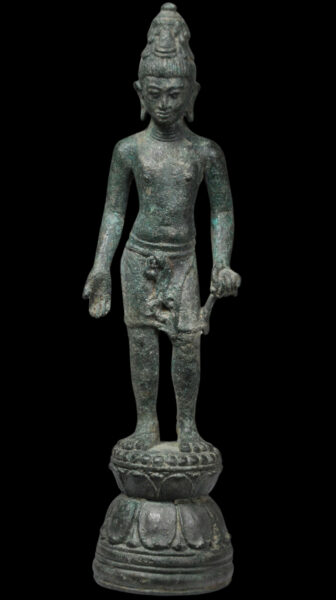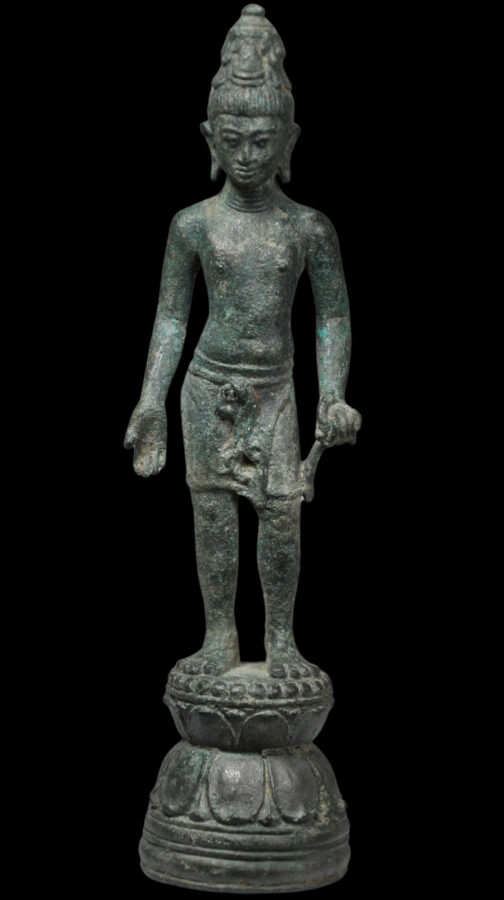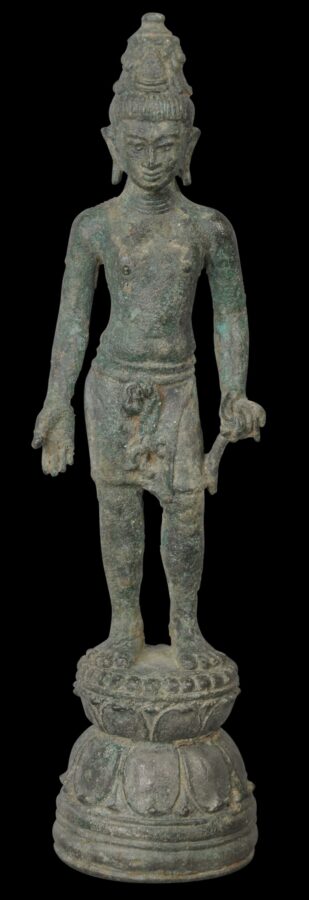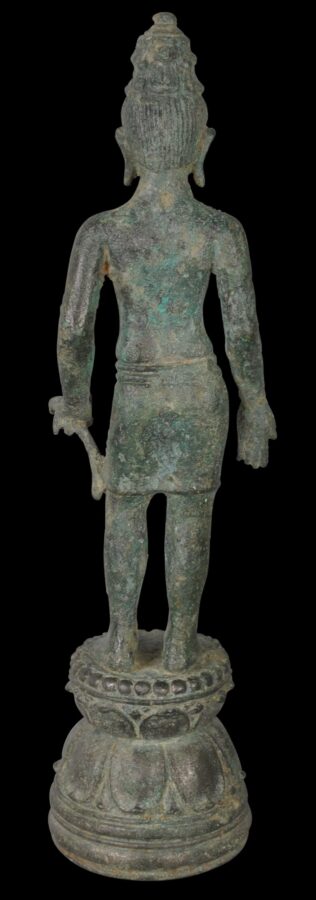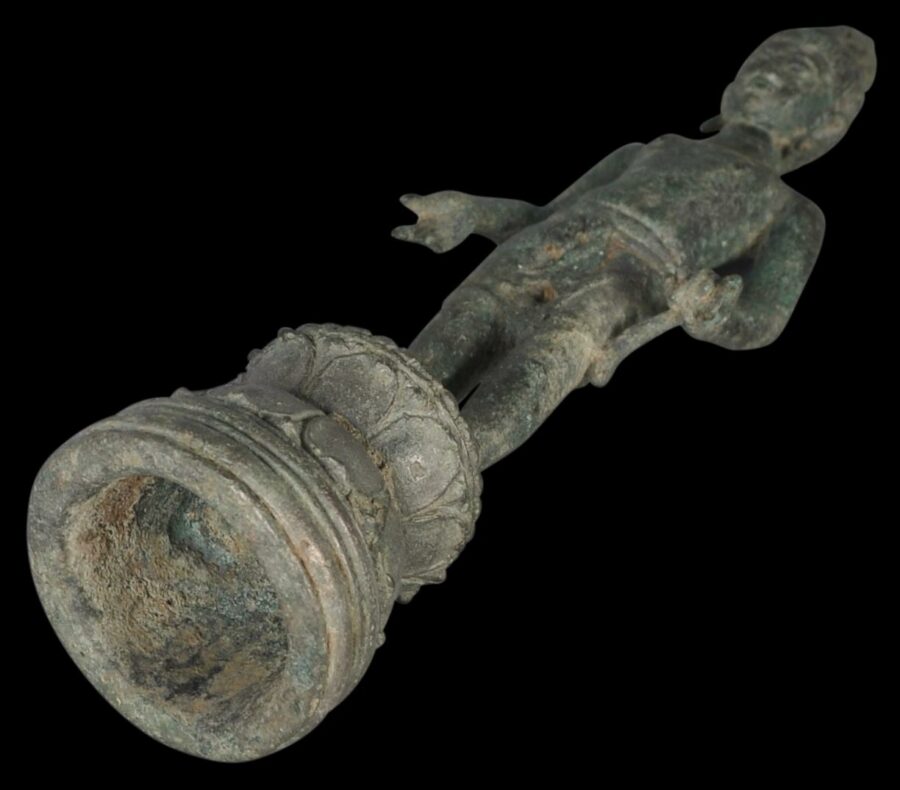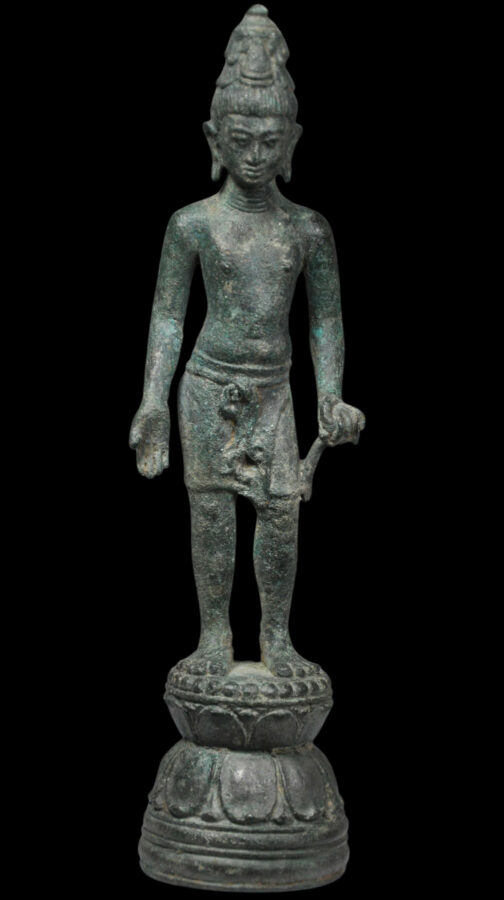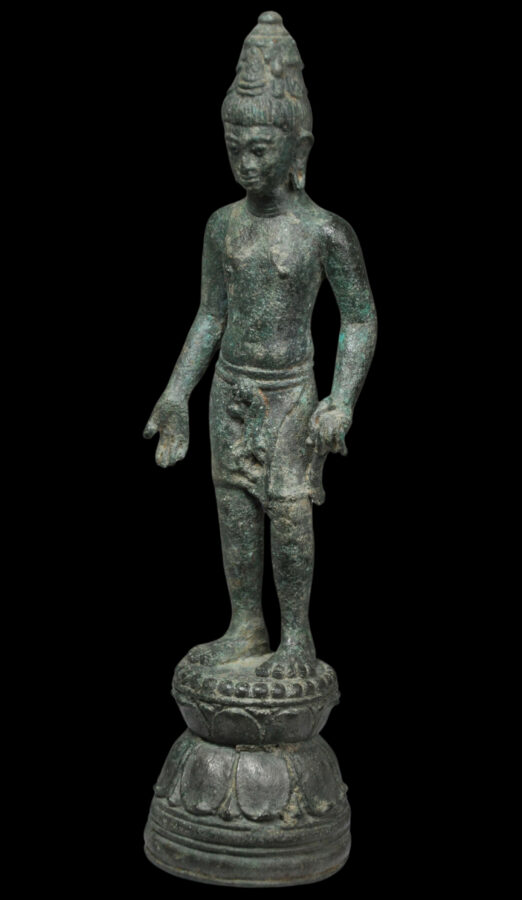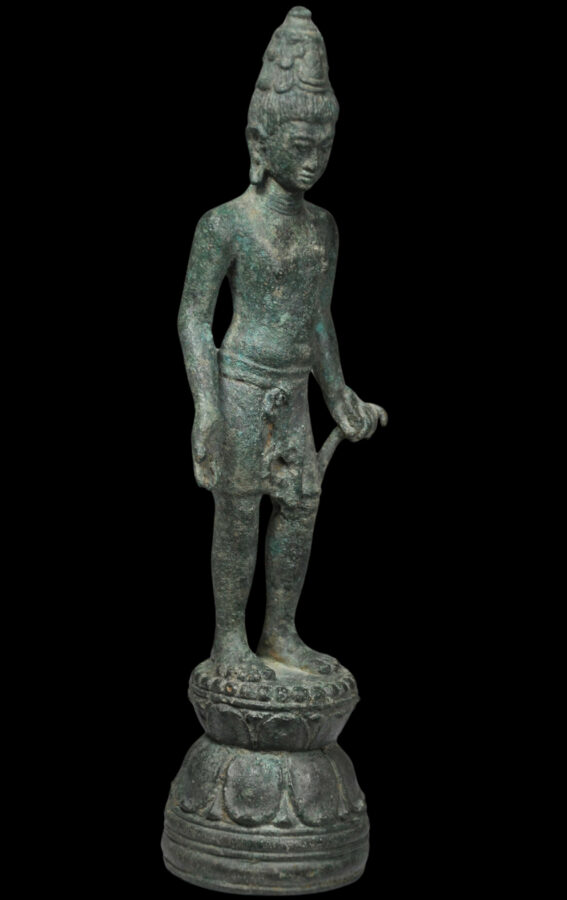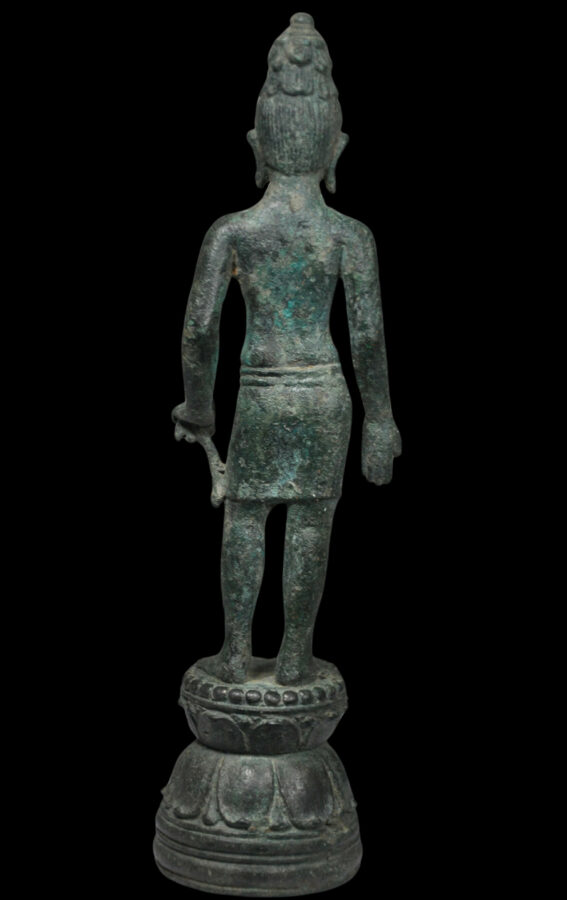Enquiry about object: 9456
Srivijaya Period Bronze Standing Maitreya
Srivijaya Kingdom, Probably South Sumatra, Indonesia 7th-8th century
height: 21cm, width: 5.8cm, depth: 5.2cm, weight: 789g
Provenance
private collection, London, UK.
This slender image of Maitreya standing on a high, double-lotus pedestal, has been cast in bronze. Most likely it is from the Srivijaya kingdom centred on south Sumatra and dates to the 7th-8th century.
The ears on the image are well defined and elongated in princely style, the eyes are downcast, the lips full, and there is a high chignon, with cascading loops of hair.
The image can be identified as Maitreya because of the two stupa motifs – one front and one back – in the hair (jatamukuta).
The image belongs to a Buddhist ascetic tradition and is unclad save for a short sampot or waistcloth secured with a waistband. The belly delicately bulges above the waistband.
The stance of the image shows Mon-Dvaravati influence from 7th century Thailand. The legs are apart, and the Maitreya leans slightly to one side.
Kempers (1959, pl. 174) illustrates a Maitreya bronze figure found at Palembang, which essentially approximates to where the Srivijaya capital is believed to have been located. Also, see lot 17, Sotheby’s New York, ‘Indian & Southeast Asian Art’, March 26, 2003, for an image of Avalokitesvara attributed to 8th century Thailand but probably from Srivijaya which is similar in conception.
Maitreya images are relatively rare among early Southeast Asian Buddhist images, and this is more so in the case of Indonesian Buddhist images.
The example here has a varying, green patina, and obvious age.
Srivijaya was an early Malay, pre-Islamic, Buddhist kingdom with strong trade links to the region. It was also a centre for missionary activity by monks and scholars from India who spread Buddhism and then Hinduism to the region.
Read our short essay about Srivijaya bronzes.
References
Guy, J., Lost Kingdoms: Hindu Buddhist Sculpture of Early Southeast Asia, Metropolitan Museum of Art, 2014.
Kempers, A.J.B., Ancient Indonesian Art, CPJ ven der Peet (Amsterdam), 1959.
Pal, P., A Collecting Odyssey: Indian, Himalayan, and Southeast Asian Art from the James and Marilynn Alsdorf Collection, The Art Institute of Chicago/Thames & Hudson, 1997.


